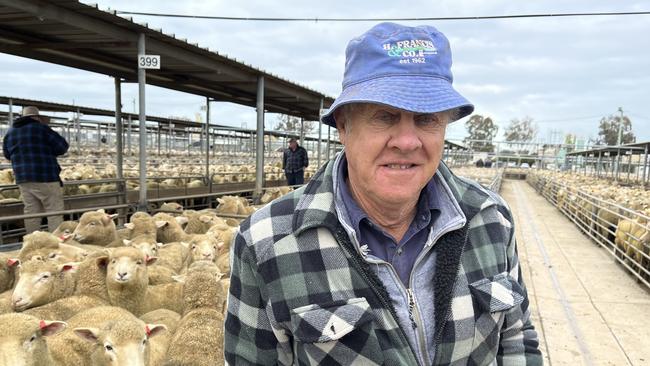Red meat profit calculator: Livestock producers’ cut as low as 35 per cent
Determining how much money from retail sales flows back to farmers is a complex calculation. See the margins here.
The age-old question of who makes money in the meat industry is being revisited in 2023 as saleyard prices plummet.
Consumers say red meat is too expensive at a retail level, and vendors say prices are too low at the farmgate.
There are estimates, that in the current market, producers may be getting 35 per cent of total retail value for their cattle.
Yet the disparities of who gets what is not new.
This exact issue was explored in 2007 when similar metrics were at play.
At the time, former Agriculture Minister Peter McGauren asked the Australian Competition and Consumer Commissionfor an explanation.
The ACCC report showed Coles cited 54 per cent of the retail dollar went back to producers; the processors received 13 per cent and 30 per cent was spent on retail costs, leaving a margin of 3 per cent.
The report found that there wasn’t anti-competitive behaviour affecting prices between the point of sale of livestock and retail.
However, finding transparency in the market breakdown is complex given the fact most butchers are buying a carcass direct from wholesalers at a set price.

This is an issue David Byard has followed closely over the years as a beef cattle producer at Pipers River in Tasmania and also the chief executive of the Australian Beef Association.
“I have been puzzled by this question of who gets what and what the return is to producers for years,” he said.
In 2012 he was involved in a demonstration where a butcher boned out a 250kg carcass, and the value and weight of all cuts were calculated.
Brand Tasmania and the University of Tasmania oversaw the trials.
As a result, a spreadsheet calculator was developed to show the price breakdown of a carcass.
Mr Byard said he was adamant that the same price confusion was in the lamb industry too.
He said the recent cattle price drop took him back to 2012 regarding comparison years.
“Getting good honest data is difficult,” he said.
“Industry is reluctant to share that information and provide proper outcomes,” he said.
Mr Byard said when he used the spreadsheet calculator in 2012, there was a price of around $4/kg carcass weight for a 200kg carcass.
“At the time, the producer was getting around 34 per cent,” he said.
On today’s prices, if a 200kg carcass is making $6/kg, the return to the producer, according to the calculator, should be 54.78 per cent.
However, Mr Byard estimates it is currently closer to 35 per cent given the present retail prices.
This figure was backed up by an industry source who said it was possible that in 2023 the producer was getting far less than 54.78 per cent, even 20 per cent less than that figure, as processors and retailers make the most of margins.
Meanwhile, Meat and Livestock Australia confirmed it has a Value Chain Quantification/Qualification and Mapping Model that can provide similar data.
The model was published in 2014 and also incorporates values for lambs, however, it is different to the ABA calculator.
It allows producers to compare inputs, material costs, set values, profits and margins.
Speaking at Wagga Wagga sheep and lamb sale last Thursday, Bryan Geppert of Narrandera said the lower saleyard prices were just as hard to quantify as the cattle values.

“I was at a supermarket the other day, and the price for a leg of lamb was $48 … still around the same as last year,” he said.
“Yet there is at least a $100 drop in lamb prices per head compared to last year,” he said.
Cattle producer Norm Thomas of Tamworth in NSW said he was currently selling cattle for 55 per cent less than they were making in October 2022.
“If you cut someone’s wage by 50 per cent, you would hear squeals, yet this is happening to most farmers right now,” he said.
“The funny thing is, I can’t put my finger on what is causing it.”
Mr Thomas said processors say their costs have increased and need to make money.
“I think it is a series of cost issues across the supply chain,” he said.
From the Royal Commission into the Australian Meat Industry in 1982 to the plummeting prices in 2023, it appears it is an industry and supply chain that will continue to pose more questions than answers.
Cattle Australia and Red Meat Advisory Council declined to comment.




